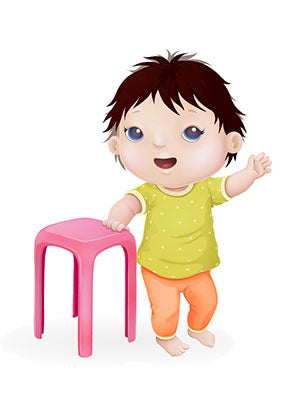
All children have their own timetable, but you can watch for certain developments in your 1 year-old. Celebrate with your child as he reaches or nears these milestones.

Cognitive
-
Looks and listens simultaneously
-
Understands how to use many objects (cuddling a stuffed toy, putting a cup to his lips)
-
Understands that objects have names
-
Understands object permanence well (looks for an object that’s hidden because he knows it’s there)
-
Has an expanding attention span (about 15 minutes)
-
Is attracted to novelty (new toys, objects)
-
Explores playthings in new ways (touching, banging, dropping)
-
Increasingly displays memory of recent events
-
Follows one-step commands (“Lift your arm”)
Motor
-
Has good accuracy when picking up small objects with fingers (pincer grasp)
-
Getting better at releasing objects from his grasp
-
Points and pokes with his index finger
-
Can feed self, although messily
-
Drinks from a cup
-
May be able to put things into containers
-
Pulls up to standing position
-
May stand alone briefly
-
May cruise along furniture
-
May even walk
Communication
-
Uses gestures to communicate
-
Shakes head or frowns to express “no” or respond to “no”
-
Holds out arms to be picked up
-
Recognizes and responds to many familiar words
-
Responds to simple questions and one-step commands
-
Uses the cadence and inflections of real conversation
-
May use “Ma ma” and “Da da” to refer specifically to parents
-
May say other early words
Ready for signs. Playing peekaboo, waving good-bye, and performing songs with gestures help prepare your baby for the idea of communicating with baby sign language. If you’d like to teach him some signs in the coming months, these actions are a good way to lay the groundwork.
Social
-
Accurately mimics the expressions and some sounds made by others
-
Imitates the actions of adults and other children
-
Enjoys watching older children
-
Enjoys being around other children but doesn’t play with them yet
-
Watches for your reactions (to banging, laughing, testing limits)
-
Shows stranger anxiety (shyness around strangers)
-
Shows separation anxiety (crying or exhibiting distress when you leave the room)
-
Shows increased affection with family
-
Waves good-bye



